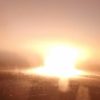
NOVOSIBIRSK, February 12 Scientists from Novosibirsk State University (NSU) and colleagues from Tomsk Polytechnic University (TPU) have begun the stage of preclinical testing on large animals of a promising option for neutron capture therapy for cancer and hope pass it quickly with the help of a new tomograph, NSU reported on Monday.
It was previously reported that from 2025 on the basis of the National Medical Research Center of Oncology named after. N.N. Blokhin (Moscow) it is planned to begin clinical trials of a unique promising method for the treatment of malignant neoplasms — boron neutron capture therapy (BNCT). The method is based on the ability to selectively accumulate the stable non-radioactive isotope boron-10 in cancer cells. After irradiation with neutrons, a nuclear reaction occurs in such cells with the release of energy, which leads to their death.
“Today in Russia, in fact, the only manufacturer of accelerators of the required type is the Nuclear Physics Institute, and boron-based preparations are not produced in the country. This imposes some restrictions on the scale of implementation of this option of NRT in healthcare practice. Therefore, we are simultaneously testing another option, which involves the use of reactors that unlike accelerators, they work virtually continuously, and drugs based on gadolinium,” said Vladimir Kanygin, head of the laboratory of nuclear and innovative medicine of the Faculty of Physics of NSU.
According to the scientist, there are noticeably more reactors in Russia, which after some modification can be used in medical institutions, and there are no problems with the production of gadolinium-based drugs — they have been widely used as contrast agents for a long time connections.
«Scientists from NSU first successfully tested this approach on laboratory rodents in Akademgorodok, and then, in collaboration with colleagues from Tomsk Polytechnic University (TPU), moved on to tests on large animals. The researchers focused on dogs and cats with spontaneous tumors that usually develop into similar types of cancer in the same organs as in humans,” the university noted.
In this case, the main problem is to study the dynamics of the condition of four-legged patients after a course of neutron capture therapy. Until recently, in Novosibirsk, the tomograph necessary for research was available in only one veterinary clinic, and the examination was expensive.
According to Kanygin, the process should noticeably speed up due to the fact that such a tomograph has recently appeared at NSU. He recalled that preclinical testing in large animals is key to testing NRT technologies before moving on to human trials. “Based on the results of previous tests and new capabilities in terms of equipment, NSU expects to take this step in the very near future,” the university added.
























































Свежие комментарии